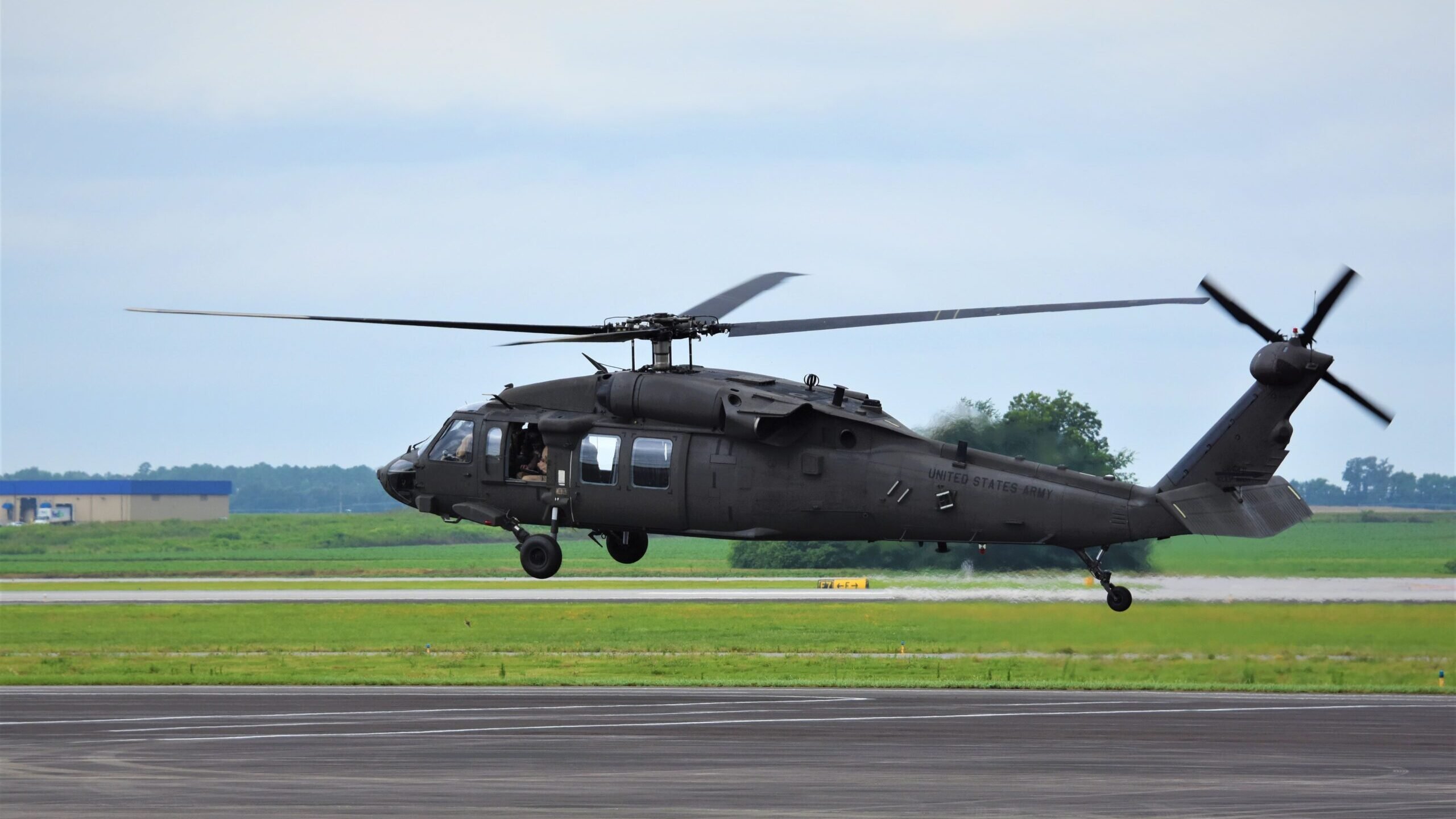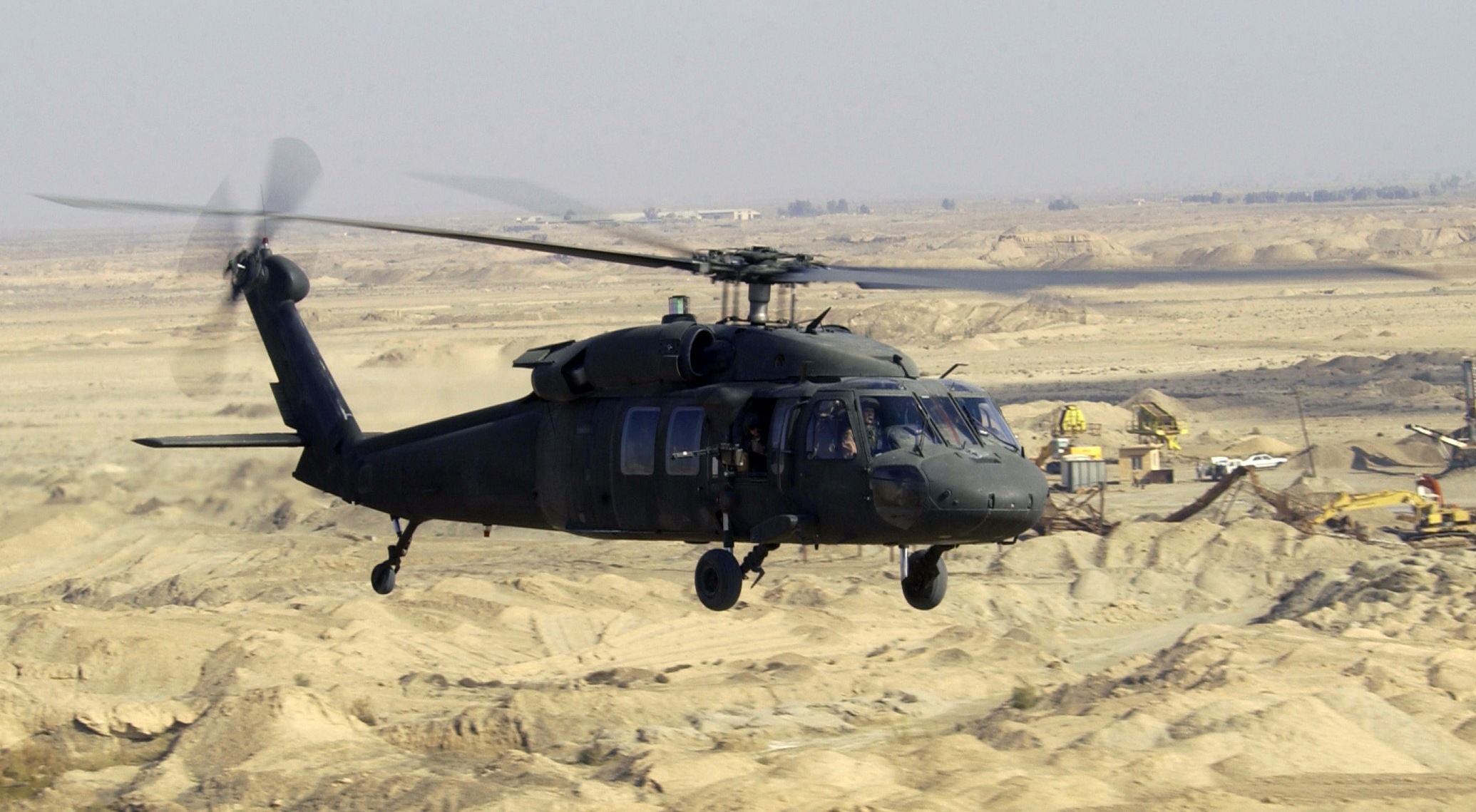Explore the World of UH 60 Helicopter: Understanding Its Benefits and Key Components
The UH-60 helicopter, frequently known as the Black Hawk, stands as a stalwart in armed forces aeronautics, prized for its adaptability and reliability in a multitude of functional circumstances. Past its renowned shape exists a complicated array of elements and systems that add to its prowess (uh 60 helicopter). From its beginning to its current versions, the development of the UH-60 showcases developments that have thrust it to the center of airborne procedures. As we discover its advantages and divide its key parts, a much deeper understanding of this airplane's significance in armed forces, search and rescue, and catastrophe relief missions emerges, shedding light on the vital function it plays in the realm of rotorcraft.

Evolution of UH-60 Helicopter
The advancement of the UH-60 helicopter showcases significant innovations in rotorcraft innovation and functional capacities. Originally designed in the 1970s by Sikorsky Aircraft, the UH-60 Black Hawk has undergone numerous upgrades to fulfill the changing needs of contemporary warfare and emergency situation feedback goals. Among the most remarkable improvements in the advancement of the UH-60 is the incorporation of sophisticated avionics systems, such as digital cockpits, GPS navigation, and communication systems, enhancing situational recognition and objective efficiency.
Furthermore, enhancements in engine modern technology have enhanced the UH-60's power and efficiency, enabling it to operate in high-altitude atmospheres and severe weather more properly. The introduction of composite products in the airframe has actually lowered the helicopter's weight while enhancing its resilience and resistance to exhaustion, causing enhanced general performance and durability.

Advantages in Armed Force Operations
In army operations, the UH-60 helicopter uses strategic advantages that enhance mission efficiency and operational success. One key advantage of the UH-60 helicopter is its convenience.
Additionally, the UH-60's durable design and advanced innovation add to its dependability in requiring battle settings. Its twin-engine setup offers redundancy, boosting safety and survivability throughout objectives (uh 60 helicopter). In addition, the helicopter's advanced avionics and communication systems make it possible for seamless control with ground pressures, improving situational recognition and mission implementation
Additionally, the UH-60's capability to operate in varied surfaces and environments, including hot and high-altitude environments, provides military forces the adaptability to carry out operations in challenging setups. This ability is especially critical for unique procedures and rapid implementation scenarios anonymous where agility and rate are vital. On the whole, the UH-60 helicopter's benefits make it an important property in armed forces procedures, supporting objective success and army protection.
Key Components and Equipment
Exemplifying accuracy and elegance, the UH-60 helicopter integrates a complicated range of essential parts and systems necessary for its ideal performance in varied functional scenarios. At the heart of the UH-60's capability is its rotor system, comprising a main rotor and a tail rotor. uh 60 helicopter. The primary blades offers lift and drive, making it possible for the helicopter to ascend, come down, and maneuver flat. All at once, the tail blades combats the torque created by the main blades, guaranteeing security throughout trip. One more critical part is the transmission system, liable for moving power from the engines to the rotors successfully. The engines, typically two turboshaft engines, supply the needed power to thrust the helicopter. In addition, the UH-60 is furnished with sophisticated avionics systems for navigation, interaction, and mission-specific devices assimilation. These systems improve situational understanding, interaction capabilities, and goal effectiveness. The assimilation of these key components and systems highlights the UH-60 helicopter's track record as a versatile and reliable airplane in military and private operations.
Role in Search and Rescue Objectives
Throughout vital objectives calling for swift and specific airborne assistance, the UH-60 helicopter plays a critical function in search and rescue procedures. Equipped with advanced innovation and abilities, the UH-60 helicopter can promptly get to remote or hard-to-access locations to aid in search and rescue efforts. Its agility and adaptability permit it to browse diverse terrains, from hilly areas to metropolitan atmospheres, making it an important possession in situating and removing people my response in distress.
The UH-60's large cabin suits clinical personnel and required devices, assisting in the fast emptying of injured or stranded individuals. Its capability to run in various weather further enhances its effectiveness in search and rescue goals, making certain continuity of operations also in negative situations. Additionally, the helicopter's endurance and array allow continual search initiatives over extended periods, enhancing the likelihood of successfully locating and obtaining missing persons.

Influence in Calamity Relief Operations
Playing an essential role in mitigating the after-effects of all-natural catastrophes, the UH-60 helicopter's operational effectiveness shows critical in catastrophe relief operations. The UH-60's flexibility allows it to accessibility hard-to-reach areas rapidly, providing products, saving stuck individuals, and providing medical discharge services in the wake of catastrophes. Its capacity to transfer hefty lots and suit cots makes it important in relocating essential sources and injured individuals effectively.

In Addition, the UH-60's innovative technology, including evening vision abilities and all-weather operability, enables it to conduct missions in tough problems, guaranteeing that alleviation efforts can proceed all the time. The helicopter's rate and dexterity better enhance its efficiency in navigating disaster-stricken locations and getting to remote areas where standard cars may struggle to gain access to.
In catastrophe relief operations, time is often of the significance, and the UH-60's swift implementation and quick response times can suggest the distinction between life and death. By offering necessary support and helping with crucial operations, the UH-60 helicopter dramatically contributes to relieving suffering and bring back security in the after-effects of calamities.
Conclusion
In verdict, the UH-60 helicopter has evolved in time to come to be a critical asset in military operations, search and rescue objectives, and calamity relief efforts. Its vital parts and systems add to its efficiency and integrity in various situations. With its sophisticated capacities and versatile nature, the UH-60 helicopter plays a considerable duty in boosting operational capabilities and saving lives in essential situations.